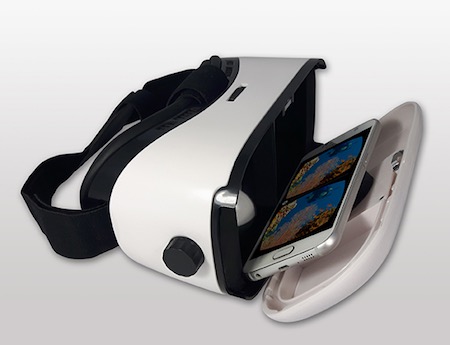A Virtual Reality Free-for-All

To reach a mass consumer audience, virtual reality, like any new technology or product, needs to be priced so the Average Joe can comfortably buy in.
It’s arguable that the high end of VR consumer products sells for an amount nowhere near what a big chunk of consumers would willingly pay. The Oculus Rift starts at $599, while the HTC Vive fetches $799 and must be linked to a pricey, souped-up PC to work.
Among mid-range VR products, the coming Sony PlayStation VR will start at $399, but still requires a PlayStation 4 console.
It’s a bit of a different story on lower-end VR headsets that must be paired to a compatible smartphone, which aren’t always cheap.
Google Cardboard viewers, for example, can be had for $15 or less and are occasionally given away, though the ones made out of actual cardboard (some nicer ones are made of plastic and more rugged materials) can quickly wear out.
Samsung, meanwhile, has been giving away its Gear VR viewers to consumers who buy its latest line of Android-powered smartphones, while other people can buy one for $99.
LOWERING PRICE BARRIERS
Broadcasting & Cable Newsletter
The smarter way to stay on top of broadcasting and cable industry. Sign up below
One company, perhaps not as well-known as these others, that’s trying to drop the barrier to entry and enable VR consumer adoption to make a big leap forward is Tek Gear.
The Winnipeg, Canada-based maker and distributor of high-tech products has decided to give VR headsets away (via website FreeHMD.com), with the catch that consumers must pay for shipping. (Shipping to the U.S. via UPS ranges from $30 to $150, depending on how quickly the consumer wants it).
In the early going, Tek Gear isn’t limiting who can request a free headset or capping how many headsets it will distribute at no charge.
“Everybody who wants one, gets one,” Tek Gear president Tony Havelka said, holding that a starting price of $600 or more for higher-end headsets is out of the reach of most consumers. “We’ll keep making them until no one wants them anymore.”
Like Google Cardboard, the Gear VR (Tek Gear’s headset, made by an unnamed manufacturing partner) must be paired with a smartphone. The head-mounted display works with Google Cardboard-compatible Android and iOS smartphones with screen sizes of four to six inches, the company said.
Tek Gear racked up almost 1,000 orders on the first day of the promotion ( July 11), he said, but the current pace for requests is at about 500 per day.
While Tek Gear is new to mass-market VR products, it’s been in the space for decades. In 1992, it created its first head-mounted display, called the MRG2 (Havelka noted that Oculus used a MRG2 shell from the early 1990s for some of its early design work). It sold them for about $10,000 each.
These days, Tek Gear still sells pro-grade VR headsets for applications such as military training and to heavy equipment manufacturers. One product, the nVisor SX lab kit for advanced VR applications, sells for $23,900.
Havelka estimates that the retail value of the headset that Tek Gear is giving away is in the range of $18 to $29.99.
In terms of optical quality, Havelka said his headset is in line with the Gear VR and the headsets expected to emerge from Daydream, a new VR project at Google that will pair a next-generation of headsets (vastly improved from Cardboard) that work with Android-powered phones.
OPENING THE ‘GATEWAY’
By providing that product for free, Tek Gear is offering consumers a “gateway to virtual reality,” Havelka said.
“We’re in a completely different stage right now,” he said. “You’ve got the power in your pocket right now — it’s your phone, with great resolution, connectivity and tracking. You’ve got it all there.”
Tek Gear doesn’t make VR apps, so a big question is, why is the company offering headsets for free? What’s the payoff?
In Havelka’s view, the free headset program is not just a gateway to VR, but to the company’s range of other products, which include everything from Bluetooth modules, single-handed keyboard and mice sold under the “Twiddler” brand, to driver boards that could be used by people who develop VR apps.
“We’re not losing money if we look at it [the free VR program] as marketing for our other products,” Havelka said. “If we take all the money we’re spending on this program and put it toward marketing, it’s already paid for itself 100 times over.”
He likens spending those market dollars elsewhere to drive traffic to Tek Gear’s site as money “thrown down a hole.”
Havelka also reasons that the program will also support other VR-facing programs underway, including its work on very small screens (0.7-inch diagonals) that support full HD resolution on ultra-thin organic light-emitting diode (OLED)-based displays.
Rather than driving relatively massive five-or six-inch screens to drive the VR experience, the expectation is that these new micro-displays could project an image into each eye and play an important role in helping to reduce the size and bulkiness of today’s headsets, he said.










